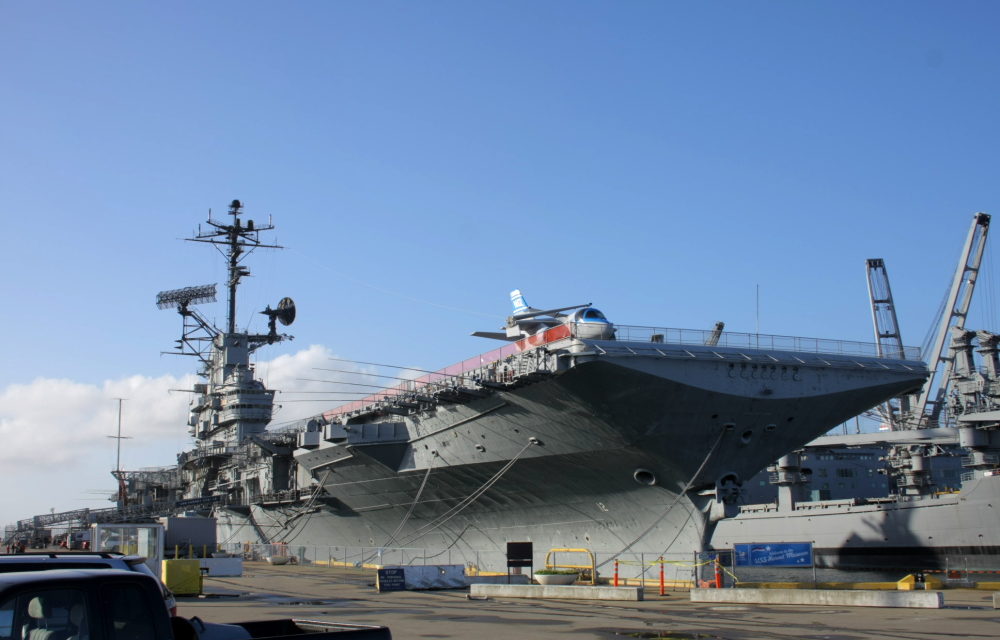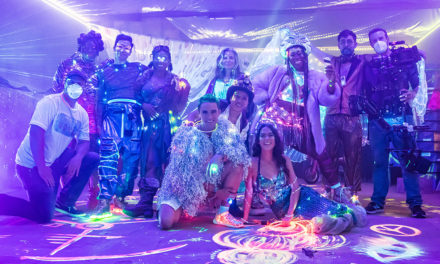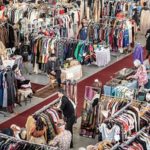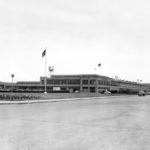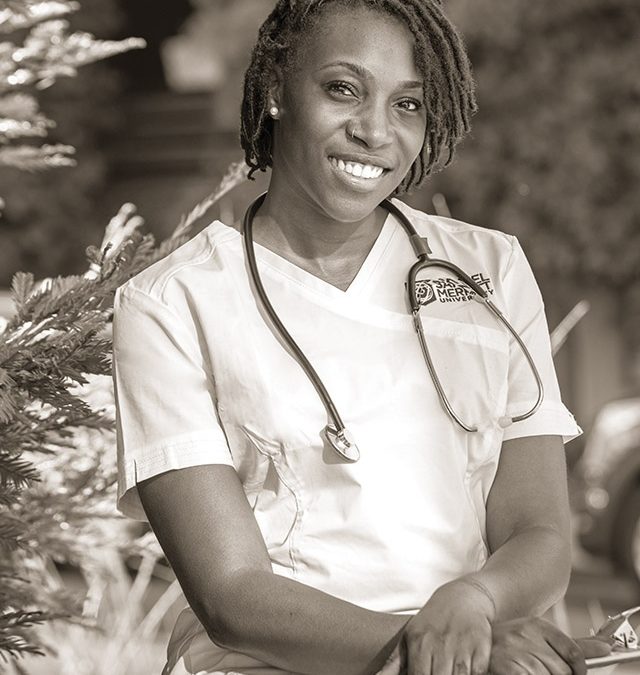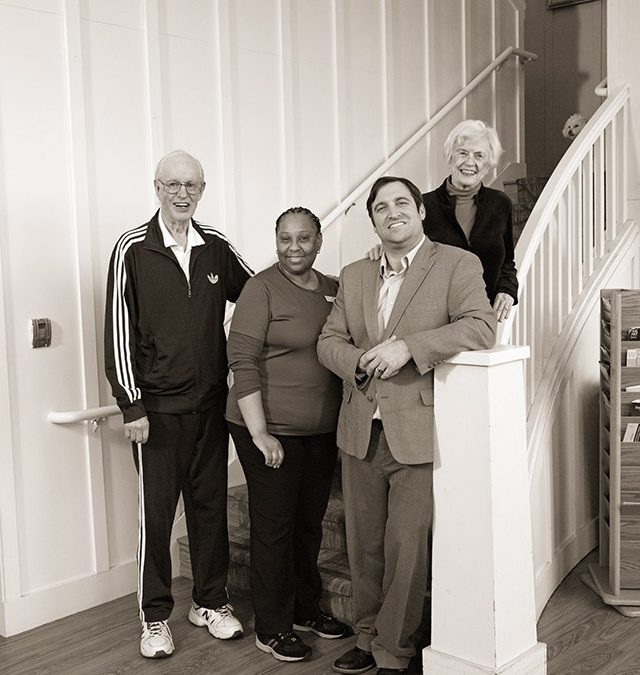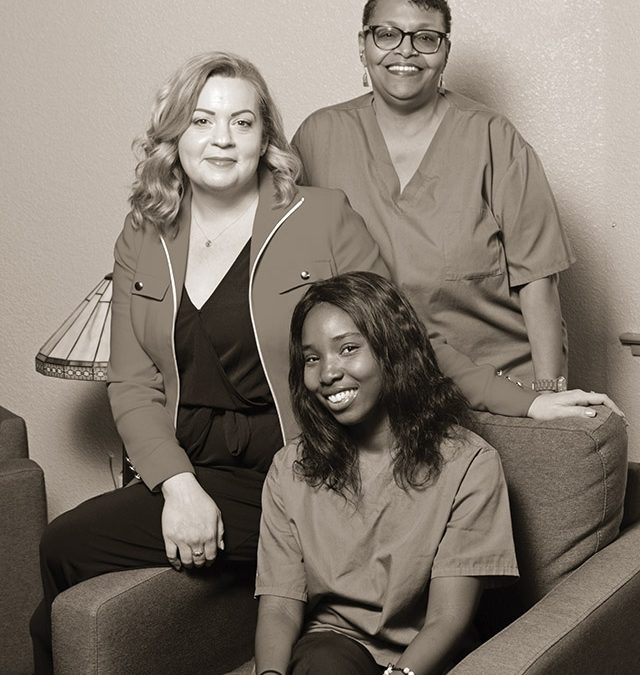The USS Hornet—berthed at Pier 3 at the former Naval Air Station Alameda—has a haunting presence. The ship resembles a hulking ghost, the exterior painted steel gray and not the camouflage colors used during combat. Known as the Gray Ghost, her radio call sign, she was decommissioned for the final time in June 1970. On a calendar of that date, found on the ship, a notation reads “Goodbye, old gray lady.”
Since 1995, when the ship was taken out of mothballs for the first time in 25 years, over thirty volunteers and staff members have experienced unusual presences and sounds on board. And while the victims are deadly serious about these sightings, they’re all good spirited when talking about their paranormal adventures, none scared off the ship by them. Even those who do night duty regularly continue to sleep on board.
Yes, the Hornet has an infestation, a whole wasp’s nest, of ghosts. And no wonder.
The Hornet has been around, in one form or another, since 1775. And while this last Hornet (USS Hornet CV-12, commissioned on November 29, 1943) had a distinguished career in WW II—never hit by a bomb, torpedo, or kamikaze plane—the previous Hornet, CV-8, wasn’t so lucky; she was sunk in battle on October 26,1942.
Over the years, the Hornet has been an attack aircraft carrier (CVA 12) and an antisubmarine warfare support carrier (CVS 12). It took part in the Korean and Viet Nam Wars. It also gained world-wide fame outside of combat when it picked up the Apollo 11 and 12 astronauts.
A master at recreating herself—with a little help from her friends—the Hornet has taken on yet another identity: A U. S. Naval Air and Sea Museum, a naval historical and technology education center, and a ceremonial ship.
Over 500 people (mainly volunteers, most of whom are retired service personnel) form the foundation that saved the Hornet from an undignified end—the junk heap, its parts turned into scrap metal. The Aircraft Carrier Hornet Foundation has many plans for the museum it manages, the only one of its kind on the West Coast, an appropriate home since the Navy’s war mainly focused on the Pacific.
In addition to the usual exhibits one expects to see on an aircraft carrier turned museum (flight simulators, Combat Information Center, Pilot Ready Rooms), the Hornet has added another tour—on video: places where hauntings have occurred and interviews with people who’ve been haunted.
I talked by phone to one of these people, Derek Lyon-McKeil, an electrician. In 1995, when the Hornet club was seeking volunteers to help save the ship, he joined up. Derek isn’t eager to admit there are ghosts and thinks there must be a scientific answer.
He described one incident he had during Fleet Week in October 1995. About five or six volunteers were staying on board, including Keith LaDue (mentioned later in this article), who corroborates Derek’s story:
“We’d all just bunked down, and we had a rule. No exploring. All of a sudden, I heard this banging noise like someone was opening the hatches who shouldn’t have been. Peter Clayton, our supervisor, came charging around, saying ‘Okay, who’s sneaking around opening hatches.’ We realized that everyone in the group was there. As we were all standing there staring at each other, we heard it again. At that point we were pretty secure. It couldn’t have been anyone who’d gotten aboard.”
Keith LaDue, a former rock musician and a jack-of-all-trades, also has been involved with the ship since 1995. He frequently stays on board for security purposes and does overnights with Scout troops, part of the Hornet’s educational outreach program. In his jeans and tee-shirt, long brown hair pulled back in a ponytail and wearing a baseball cap, he stands out from the others working on board and has had the most sightings.
In July 1998, he was working in Hangar Bay 3, up on a scissors’ lift. He says, “I was like at 28 feet, stretched to the maximum. I was up there until about 8:30 at night, and I was by myself on the ship.
“I wanted to finish the section I was working on before I left. When I had still about two to three gallons of paint left in my machine, I started hearing voices, aircraft crews talking shop talk, dropping tools and working on airplanes, talking about the airplanes they were working on and parts and home.
“I thought, wait a minute, come on guys, I’m almost done for the night. Can you let me finish? Let me get down from here. This is really starting to spook me.’ And it stopped.”
Was Keith hearing some residue from the past, a time warp?
Before Christmas in 1998, Keith and another crew member (who doesn’t want to be identified) were putting up a 15-foot Christmas tree in Hangar Bay 1. They saw someone run into the tree. Keith says, “It looked to me like he was wearing one of those long pea coats and a dark blue navy uniform. I go, ‘Did you see that?’ My buddy said, ‘Yeah, I did, with my own flashlight. Let’s go investigate.’
“We walked all around the perimeter of the tree, and no one was there. No one was there!” Keith’s eyes have grown bigger, as if he’s seeing the apparition again.
He says, “This stuff is startling, and it can be scary, but nothing is bad.”
Other skeptics on board have experienced strange things. Alan McKean, whose family has a history in the navy, has never been a big believer in paranormal activities. One of the museum’s founders, his close-cut gray hair and brisk manner give him a military bearing.
Early in 1999, Coca Cola made a corporate visit to the Hornet. Alan says, “The five of us were touring the island structure, and we ended up in the Flag Bridge, the lower of the two bridges. Three of the party went around a wall and out on the outer bridge extension. Mark, a sales rep from Coke, and I were standing there when I looked over and saw a fellow in khakis, wearing an overseas hat and a uniform, going down the ladder.
“He was on the first step of the ladder, going to the deck, and he turned around and looked over his left shoulder directly at me. It’s not my imagination! It was just as if I was seeing you, about fifteen feet away. He was probably in his 40’s. He didn’t say a word. Then he went down the ladder. He had the look of ‘I’ve got business to do, and I’ve got to go do this and don’t get in my way.’
“His uniform was navy. Short sleeves. They wore them that way in the 40s, though it could have been the 50s and even 60s. He was a senior officer. He just went down the ladder.
“I said to Mark, ‘Excuse me, I’ve got to find out who that it is.’ Mark said, ‘Yeah, okay.’ (Mark had seen the man, too.) So, I went down the ladder, and you know 15 feet is nothing to cover. I yelled as I descended and kept going down. That ladder ends up in the vestibule to go out onto the Flight Deck.
“I looked down that ladder and nobody was there. There was nobody out on the Flight Deck. There was nobody on the escalator coming up. I yelled again. I just wanted to say ‘Hey, can I help you.’
“I continued all the way down to the Hangar Deck and went to security. I said, ‘Is there a commander or somebody here aboard?’ They said, ‘No. Nobody in uniform.’ I went back up the ladders and I couldn’t find anyone. I don’t think it’s humanly possible to go down that fast. You would have heard something. I didn’t hear anything.
“It wasn’t scary. Very matter of fact. It wasn’t a cold look he gave me. Just very business-like. I don’t have any explanation for it, and Mark didn’t either.”
Alan isn’t the only one who has seen men on board in uniform who couldn’t be traced. On a Saturday in January or February of 1999, Bob Rogers, a former navy man and another Hornet Foundation founder, decided to go down and look at Main Control, one of the engineering spaces. He wanted to see how far they’d gone in cleaning it up and preparing it for the public.
He says, “I started down the ladder. One level below, I could see someone in a khaki uniform descendig the ladder below me. I could see him walk around, come out of the ladder, walk around and go down the next ladder. He wasn’t gray-haired. He was a brunette, dark hair. He never looked up. Just walked down. I could see his shoulder and part of his head.
“Then I went right on down to the engineering space. No one was there. That’s a confined space. When you go below decks, you can’t go through. There are no doors. You can only continue down through compartments that are stacked below you. You can’t go forward or aft or across.
“I went in the main and only entrance to that space that was open. The other side was locked up and chained closed. The escape route was locked. No one was in there.
“There’s no way someone could have gotten by me. First, there’s no way someone could have gotten to the other side without me hearing them. And the lights were out down there. I had to turn on the lights. There were lights on in the trunk (a passageway going vertically up and down several decks), but not in that space. There was no one there.”
Bob chuckles and looks around his office—one level below the flight deck—at the many images hanging on the walls of the Hornet in her former glory. He readily calls these appearances he’s had “ghosts” or “spirits.” Some people laugh off these experiences. He doesn’t. “I saw it. It has to be something.” But he thinks they’re fun ghosts, interested in the ship and what’s going on.
An incident that happened back in October 1995 supports his view. Bob, Keith LaDue, and a couple of others were securing the ship. The Navy wasn’t going to let the group have access to the Hornet any longer. Since the volunteers weren’t certain then that they could save the ship, they were locking it up so people couldn’t come aboard and steal things.
For four months before this time, Bob had been walking the decks, gathering all the chain he could find. There was no more chain. When it came time to lock up all the engineering spaces, he got out all the chain that he’d saved.
Bob says, “Very shortly I went through all the chain I’d gathered, and we still had six more engineering spaces to do. I jokingly said, ‘Hornet, give us chain.’ Then I walked down a passage and around a corner and here’s a pile of brand-new chain in the corner. It wasn’t corroded or aged. It was sparkly brand new like it was out of a store. I looked at it and kind of laughed and said to the others, ‘Look, Hornet gave us chain.’”
Bob and the others made this request six times, and each time they found new chain. A genie in the Hornet? Maybe.
Women working on board have also experienced the presences. Daphne Tallmadge, a former part-time office worker, was going to lunch one day in the Flight Mess lounge. She says, “On my way down, I saw an image and I said ‘Hi.’ It was a man. I couldn’t really see his age; it was dim down below. I saw a shape and a little of his image. I could see enough to know it was a man, wearing khaki. I thought he was someone from the Hornet.
“I was sitting down and eating when I thought wait a minute. He made no response to me. He didn’t say anything. He just stared. I saw him full front just standing there, still, arms to his side. Right then I went back to see if the guy was there, but he wasn’t. I hadn’t heard anything about ghosts on the Hornet before that.”
Though she laughs when she tells about this experience, Daphne has stopped eating in the Flight Mess.
Doors open unexpectedly. People appear when you think about them. Invisible presences look over your shoulder or brush up against you. These are just a few of the things people working aboard the Hornet have experienced.
Is there a rational explanation?
Loyd Auerbach, a parapsychologist who teaches at John F. Kennedy University, has been doing investigations of paranormal events for 20 years. He has some theories.
He says, “Two things could be going on. One is traditionally called a haunting. A location absorbs information, holding on to the past, sometimes referred to as residual memory. It’s like TV. There’s no interaction; no recognition. It’s like someone looking at you from out of a TV set. You can’t engage them.
“Apparition cases, which is what this appears to be because there’s some interaction, seem a bit more interactive. Someone has stuck around after death. The person may have unfinished business, or I’ve had cases where the ghosts have literally said they’re afraid to go on. That’s one factor.
“The other factor seems to be environmental. Something in the environment at the time of death allows that person to stick around. Magnetic fields, geomagnetic fields, the position of the earth—there are a whole bunch of things we’re looking at right now that affect psychic experience in general.
“It may be a time slip. People have reported seeing a different time as opposed to a memory of that time. But the people in that time, at the other end, also recognize and see that they’re there. In effect, we’re piercing the veil of time.”
Take your pick: ghosts, hauntings, apparitions, spirits, the wind, stray animals, fertile imaginations, wish fulfillment, mass hysteria, voice throwing, hallucinations, stowaways, time lapse—any and all of the above explanations may be true.
One thing does seem verifiable. The Hornet has been reborn from the hands of many midwives. Those involved with her want to preserve her past, to make sure future generations know her story. It’s taken incredible dedication to bring this about—from the Hornet foundation and its helpers, visible and invisible.
As for me, I have one more story to check out. It’s common knowledge that when the Hornet is at sea—and apparently this occurs in port, too—if you go to the stern of the ship at twilight, you’ll see a formation of planes following it, supposedly the Torpedo squadron, shot down at the battle of Midway. (They flew off the earlier Hornet—the one that sank.) Many former crew members have seen this formation, and they say you can still view it.
But it must be at twilight. Will you join me?
 in the Hudson’s Bay Company, as a long-distance operator for the former Alberta Government Telephones, and as a secretary (Bechtel Corp sponsored me into the States). I also was a cocktail waitress at the Fairmont Hotel in San Francisco, briefly broke into the male-dominated world of the docks as a longshoreman (I was the first woman to work on the SF docks and almost got my legs broken), founded and managed a homeless shelter in Marin County, CA, and eventually earned two Master’s degrees (one in Creative writing and one in the Humanities).
in the Hudson’s Bay Company, as a long-distance operator for the former Alberta Government Telephones, and as a secretary (Bechtel Corp sponsored me into the States). I also was a cocktail waitress at the Fairmont Hotel in San Francisco, briefly broke into the male-dominated world of the docks as a longshoreman (I was the first woman to work on the SF docks and almost got my legs broken), founded and managed a homeless shelter in Marin County, CA, and eventually earned two Master’s degrees (one in Creative writing and one in the Humanities).
Curva Peligrosa, Fling!,
Freefall: A Divine Comedy,
The Ripening: A Canadian Girl Grows Up,
All This, & No More Kings
Lily’s blog
“I write to make sense of my life.” John Cheever

